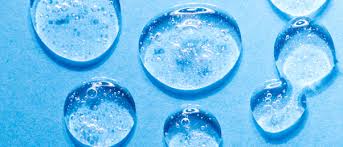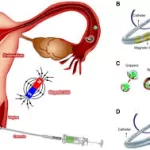In a significant advancement for wound care, researchers have developed a novel hydrogel that exhibits natural antibiotic properties, promotes cell growth, and addresses key limitations of traditional hydrogels.
Published in APL Materials by AIP Publishing, the study introduces a groundbreaking hydrogel formulation that is easier to synthesize and offers enhanced resilience to external forces, making it well-suited for treating skin ailments and tissue engineering.
Hydrogels, polymer-based biocompatible materials, have long been utilized for their ability to retain water, deliver drugs into wounds, and biodegrade. However, their complex manufacturing process and susceptibility to external forces like rubbing against clothing or wound dressings have posed challenges in clinical applications. Additionally, conventional hydrogels often require infusion with antimicrobial drugs or metal ions to combat bacterial infections, raising concerns about antibiotic resistance and negative effects on cell growth.
Lead author Jing Sun explains the motivation behind the research, highlighting the need for improved wound care solutions, particularly for patients with chronic conditions like diabetes. “A diabetic patient may have skin wounds that do not heal easily due to metabolic disease,” Sun said. “The patient may try to treat the wounds with topical medicines such as erythromycin, and it may be effective at first, but over a long period of time, it may fail to relieve symptoms. This could be due to antibiotic resistance.”
To address these challenges, the researchers modified the common hydrogel Gel-MA by incorporating the amino acid polylysine and platelet-rich blood plasma. The resulting hydrogel demonstrated remarkable properties, including enhanced strength, prolonged durability, antibacterial efficacy, and promotion of cell growth.
“The hydrogel continuously releases polylysine on the wound surface and continuously inhibits bacterial growth,” Sun explained. “We chose ε-polylysine because it can inhibit the growth of bacteria and solve the problem of antibiotic abuse, drug resistance, and does not affect the proliferation and development of cells. It can also conjugate with gelatin methacrylate, which plays an antimicrobial role and enhances the mechanical strength of the hydrogel.”
In laboratory tests, the hydrogel effectively damaged bacterial cell membranes and induced bacterial cell death in pathogens such as E. coli and S. aureus, the bacterium responsible for staph infection. Importantly, the inclusion of platelet-rich blood plasma stimulated the release of growth factors and increased the viability of healthy cells.
The researchers also streamlined the synthesis process, enabling the hydrogel to be cured under a UV lamp for just 30 seconds, compared to the conventional method involving repeated freezing and thawing over several hours.
“As a clinician and researcher in dermatology, I have the obligation to provide better treatments for patients,” Sun emphasized. “Patients with chronically infected wounds combined with metabolic diseases, such as diabetes, malnutrition, and other diseases, as well as long-term bedridden patients will be helped by this solution.”
The development of this innovative hydrogel holds immense promise for revolutionizing wound care and improving outcomes for patients suffering from chronic skin ailments and tissue injuries. As further research and clinical trials progress, this breakthrough may soon translate into tangible benefits for individuals in need of advanced wound healing solutions.











